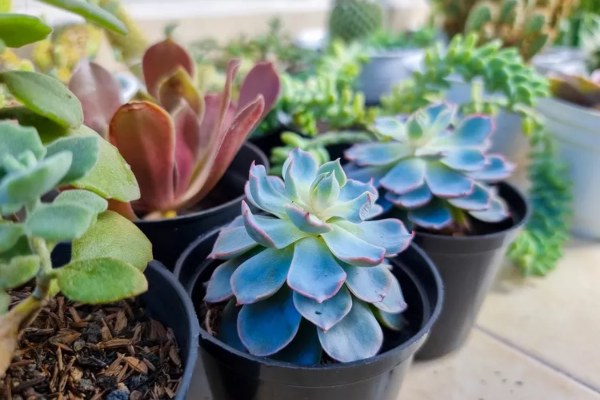Succulents are normally thought of as very easy-to-grow and low-maintenance plants. Having said that, there are a few basic tips for growing them that are necessary to follow to keep them at their best. The guidelines apply to most of the succulents. That means some particular plants may require additional care techniques to help them sustain. Keep in mind that succulents have a very wide variety of plants and some of them may have a bit different growth habits and care needs.
The most important thing about succulents is their ability to store water in their leaves, especially leaf tissues. This proves that they are very drought-tolerant and do not need to be frequently watered. Having said that these beautiful plants still need consistent watering, proper sun exposure, and humidity to thrive. We have some tips that will help you give the best care to your succulents.
How to care for succulents
These professional guidelines are designed to keep your succulents healthy and happy.
-
Give your succulent enough light
Most succulents are native to hot or desert climates and can tolerate enough sunlight. Bright sunlight, direct, indirect, or dappled lights work pretty well for succulents grown indoors. If your succulent leaf color looks lighter or faded, try slowly increasing their exposure to sunlight.
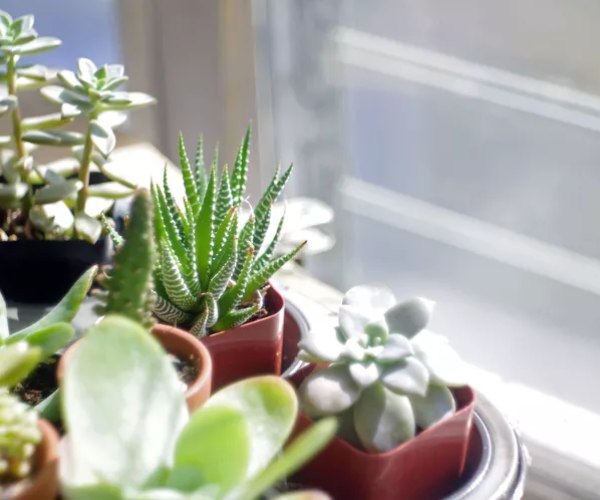
2. Provide well-drained soil
Succulents need well-draining soil that has a lightweight texture. We recommend you add a bit of sand and perlite to the potting soil it helps in the proper growth of the plants. There are potting mixes available, especially for certain types of succulents such as cacti, and you can use them.
3. Choose a suitable container
Choosing a perfect pot for your succulent is very important. Natural materials like terracotta clay or ceramic, with proper drainage holes in the bottom, are great for succulents. Remember to place a tray or dish beneath the pot as it helps catch excess water.

4. Water consistently as required
You only need to water your succulent when its soil gets dry. In many cases, this can be once a week or every two weeks. In winter, reduce watering frequency by half as these plants require much less water during their dormant season. While overwatering can kill your succulents, proper watering is essential to keep these plants healthy.
Also, Read 10 Pest-Repelling Companion Plants for Roses
5. Provide appropriate humidity
Some succulents love humid environments. If you’re not sure if your succulent falls under that category, do some research on the varieties of succulents that you have. Keeping a dish of water nearby provides humidity and you can also use a spray mister to moisten the soil surface as an alternative. Also, you can try using a small humidifier or you can keep your plant outdoors to increase humidity. Remember that too much humidity can cause problems for your plant.
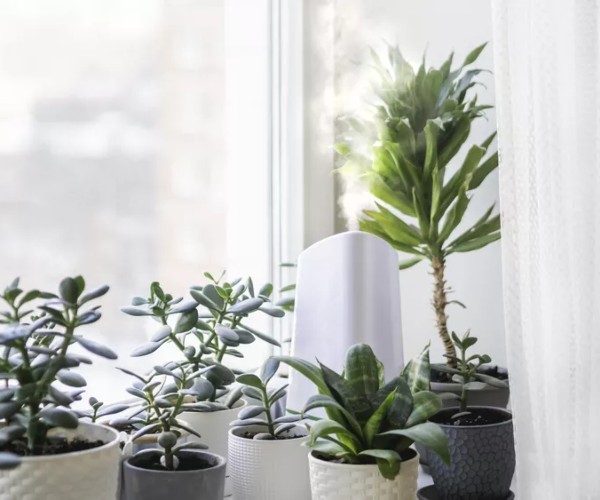
6. Use fertilizer sparingly, if at all
Succulents do not need much fertilizer. While giving them some fertilizer at the start of their growing season can boost their growth, you must be careful with fertilizers afterward. Adding soil amendments to potting soil is a great way to add nutrients to the plant. This includes perlite, compost, coffee grounds, and powdered eggshells.
7. Observe temperature needs
Succulents are native to desert climates where the temperatures can be very high during the day and very cold at night. Therefore, these plants can adapt well to a different range of temperatures. Some succulents can handle a range of 40-90F when grown in containers outdoors.
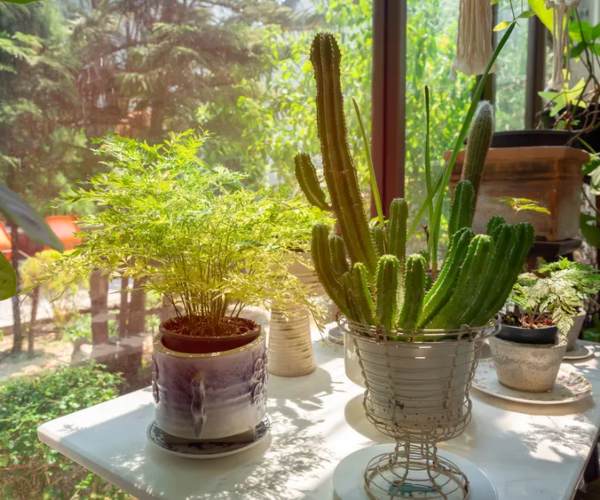
To keep your succulents thriving, you can generally keep temperatures between 60-80F but check if your specific variety of plant needs special temperature requirements.
8. Rotate your succulent often
It is essential to rotate your succulent container by a quarter turn every few days to ensure that your plant is getting enough exposure to sunlight. Doing so will help the succulent leaves to grow even fuller and give a more balanced look. If it starts to have a heavier growth on one side, you will know you need to rotate more.
9. Remove pests promptly
If you notice any insects like aphids or spider mites, make sure to remove them immediately. It is also recommended to remove any plant parts that are showing signs of infestation to keep any further damage at bay. Often pests are tiny so examine them thoroughly at the leaves. Some pests can be easily wiped off using a cotton cloth with a few drops of neem oil on it.

10. Move your succulent outdoors occasionally, if possible
If you’re growing succulents in pots that are movable, they adapt well to being moved outside for a few weeks or even months at the height of the growing season in spring and summer. Protect them from windy storms or heavy rains.
11. Repot your succulents when needed
Repotting succulents occasionally might be a good idea. This becomes a necessity when it grows too large for its pot or when the soil needs to be refreshed. Ensure to replace the soil with a suitable potting mix and water very lightly after repotting.

When succulents do not need too much effort to thrive, you have to be aware of their needs, especially during watering. Their other requirements include adequate sun, rotating them every few days to give them well-rounded sun exposure, bringing them outside during the warmer months, and repotting them as needed. Once you learn these things, you will find them to be easy and satisfying plants to grow.
3 low-light succulents that grow without bright light
Several low-light succulents can grow without bright light. They might not thrive or grow as readily as in partial shade or bright light, they’ll just get by. They can’t grow in complete darkness, so choose a partially shaded spot. In search for the sun, they might get a bit leggy but you can prune and propagate to fix their look.
-
Desert Rose
The thick, fleshy leaves of the succulent stores water so that you do not have to water it frequently. This succulent got its name from its habitat and its resemblance to a rose.
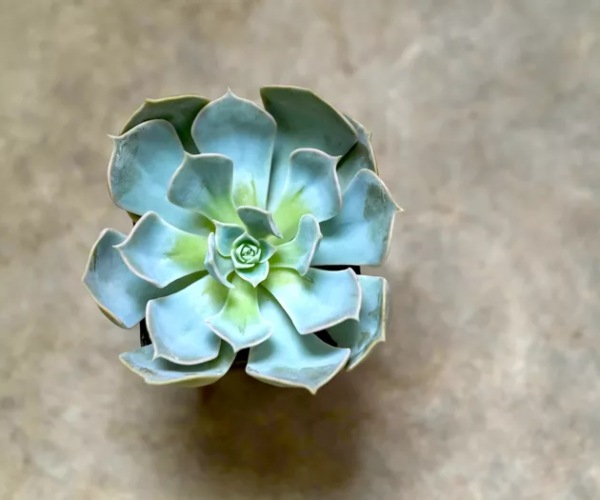
- Name: Desert Rose (Echeveria lilacina)
- Light: Prefers bright, indirect light but will do fine in low-light situations
- Soil: Well-draining soiling
- Mature Size: Up to 6 in tall
2. Aloe Vera
When someone says aloe vera, most of you will think of the cool gel that you rub on sunburns. That gel is the product of the leaves of this plant. The leaves can grow thick and can be broken off and the gel is also used to treat burns. It will do okay in low light but if you want to grow it bigger, it needs some light.
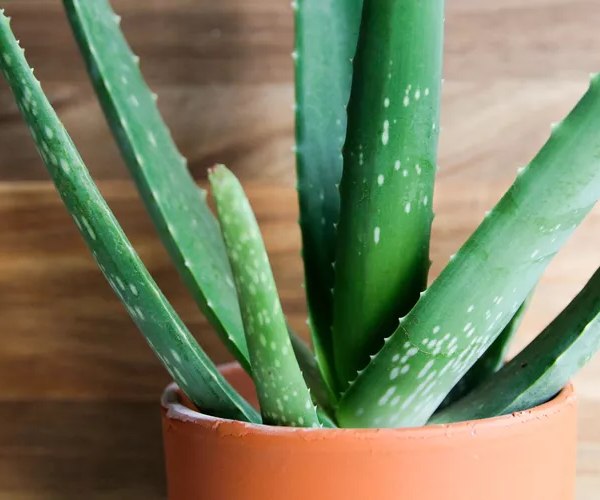
- Name: Aloe Vera (Aloe barbadensis)
- Light: Does fine in low light but will not survive in total shade
- Soil: Well-draining potting or succulent mix
- Mature Size: Up to 36 in. tall
3. African Milk Tree
While this plant is called a tree, it is a succulent. This plant’s succulent can be toxic so if you’re handling it, make sure you wear gloves and wash your hands later. The stem of this plant looks like a cactus while the little teardrop-shaped leaves resemble a succulent.
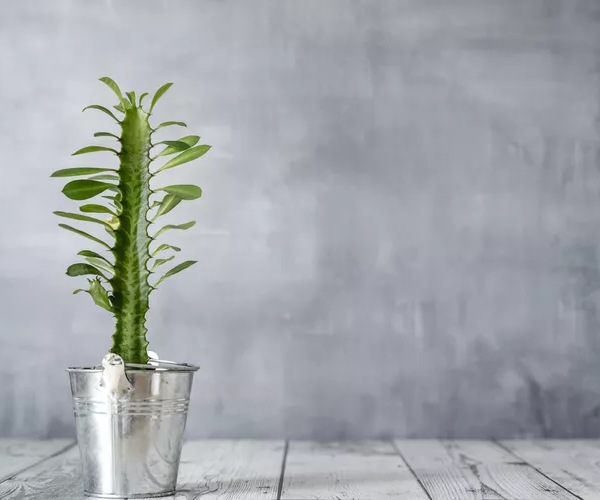
- Name: African Milk Tree (Euphorbia trigona)
- Light: Indirect light to partial shade
- Soil: Cactus or succulent potting soil
- Mature Size: Up to 9 ft. tall and 2 ft. wide
FAQs
Q: How do you take care of your outdoor succulents?
A: Outdoor succulents should be kept somewhat away from extreme weather conditions such as high tides or heavy rains. Rotate them occasionally to give them equal sun exposure on all sides so they thrive.
Q: Do succulents like coffee grounds?
A: Yes. Coffee grounds can be added as a soil amendment to the potting soil for succulents in containers.
Q: Do you water succulents from the top or bottom?
A: It’s considered best to water from the bottom because this leaves less chance that bacteria or fungus might spread on the succulent’s leaves.
Also, Read 20 Plants That Thrive in Dry Conditions for Sandy Soil
